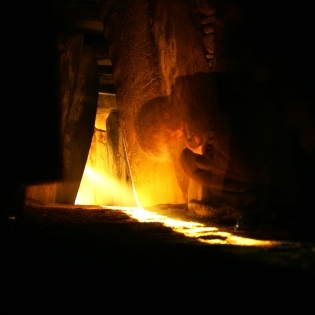 Nut grafs or otherwise relevant excerpts from entries which appeared last year at this time.
Nut grafs or otherwise relevant excerpts from entries which appeared last year at this time.
•
•
•
•
•
•
•
•
2009
• Geeks and Nerds: Autism’s Proxy Warriors
And what do we have there but two primary aspects of autism as manifested throughout society: cognitive strength and social deficit, expressed via the terms geek and nerd. In response to the recent, tortured, and pointless controversy over whether Ari Ne’eman or anyone else ever claimed autism “is not” a disability, we have Curtis Silver slicing through that false choice with a simple and direct, “You can be a geek and not a nerd, or you can be both.”
In terms of autism explicitly then, you can have deep “special subject” or “restricted interest” expertise and not have significant social deficits, OR you can have deep subject area expertise and also have social deficits. Both combinations can co-exist peacefully—dogs and cats living together—on the autism (ahem) spectrum, with no clear or sharp dividing line between them. The ambiguity, subtlety, and nuance of this reality escapes many; it’s a concept that seems particularly beyond the comprehension of those who’ve made it necessary for Sullivan over at Left Brain/Right Brain to devote time and pixels to debunking the myth that neurodiversity means denying that autism “is” a disability.
Autism both is and is not a disability; the framing of it in such narrow, black or white terms is itself what serves to collapse this complex reality to a simple and misleading “yes.”
• Neurodiversity and African Americans
There are three primary genetic pools in Africa. One genetic source is believed to have resulted in literally all other humans that have distributed themselves about the world since the diaspora of 50,000–80,000 years ago. The other two are far smaller, located in central and east/central Africa. All three are relatively ancient compared to the many other ethnicities across the planet.
Darwin observed, while breeding pigeons, that when two widely divergent threads or strains mate or blend, having had no genetic contact for a prolonged period of time, the progeny often reveals traits of the last common ancestor. For example, Chinese pigeons were bred in isolation from European pigeons for more than 2,000 years. When cross-bred, they revealed features of the Roc pigeon, ancestor to both derivations.
A similar effect is seen in Asia. Society has strongly encouraged that the left hand not be used. The rates of left-handedness in many parts of Asia are 2% and lower. It’s difficult to determine the true handedness percentages.
The same effect comes into play with autism. Though it seems there have been dramatic rises in autism over the last twenty years, many believe we just have more refined evaluation protocols with more attention being placed upon those individuals exhibiting unconventional behaviors.
I make several predictions regarding handedness and autism, two issues that I believe go hand in hand.
… snip …
Studies exploring these issues have not been consistent. With left-handedness only recently being relieved of sinister implications and autism evaluation procedures still not universal across the world, we’ve a ways to go before we’re comparing apples to apples. Still, these predictions are based on evolutionary biological principles manifesting in society today.
Mark Stairwalt on 12/20/10 in Art/Play/Myth, featured | No Comments | Read More

